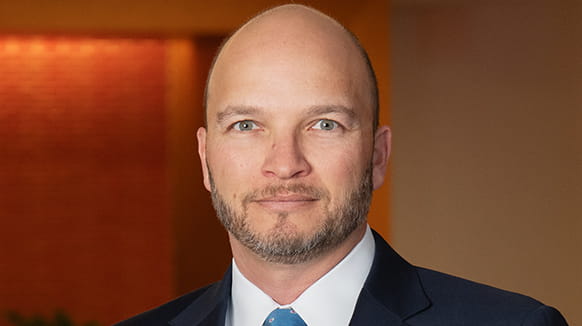The recent receiverships of Silicon Valley Bank and Signature Bank (the “Former Banks”), and the transfer of all contracts and deposits of Silicon Valley Bank to Silicon Valley Bridge Bank, N.A. (“SVB Bridge Bank”) and of Signature Bank to Signature Bridge Bank, N.A. (“Signature Bridge Bank”, and, together with SVB Bridge Bank, the “Bridge Banks”), is an evolving situation based on rapidly changing facts and governmental actions. The current situation has presented many uncertainties for clients. This Alert addresses certain matters relating to landlords who are holding letters of credit originally issued by one of the Former Banks as security deposits under leases:
1) The obligations under letters of credit issued by the Former Banks were subject to receivership by the Federal Deposit Insurance Corporation (the “FDIC”) only for a very short time. On Saturday, March 12 and Sunday, March 13, 2023, the FDIC, as receiver for the Former Banks, transferred certain liabilities and deposits of both Former Banks to their respective Bridge Banks (see the Transfer Agreement between the FDIC, as receiver of Signature Bank, and Signature Bridge Bank, dated March 12, 2023, and the Transfer Agreement between the FDIC, as receiver of Silicon Valley Bank, and SVB Bridge Bank, dated March 13, 2023, collectively, the “Transfer Agreements”). On Tuesday, March 14, 2023, the FDIC issued a Financial Institution Letter (the “March 14 FIL”) referring to the Former Banks and stating clearly to the markets that “[a]ll contracts entered into with banks before they failed, and their counterparties were transferred into the bridge bank by the FDIC as receiver.” As of the timing of this Alert, the Silicon Valley Bank website also states that “[a]ll loan positions, including as lender, issuing bank, administrative agent and any other function that was formerly performed by Silicon Valley Bank has now been assumed by Silicon Valley Bridge Bank, N.A.”. This seems to indicate that any letter of credit issued by a Former Bank is now the obligation of its respective Bridge Bank.
2) In the March 14 FIL, the FDIC clarified that the two Bridge Banks are obligated to, and have the full ability to, fulfill all obligations of the Former Banks.
3) In the March 14 FIL, the FDIC stated that “[a]ll obligations of the bridge are backed by the FDIC and the full faith and credit of the U.S. government.” This seems to indicate that the obligations of the Bridge Banks to fund draws on letters of credit are backed by the FDIC and the full faith and credit of the U.S. government.
4) The Bridge Banks were created pursuant to powers granted to the FDIC under the Federal Deposit Insurance Act (the “FDIA”) for the purpose of holding, maintaining, and operating assets of the Former Banks until such assets can be disposed. The question of whether the identity of the current issuer of a letter of credit that was originally issued by a Former Bank will change again depends on if and how this disposition occurs. If and when this disposition happens, the relevant issues and facts will need to be reanalyzed at that time to determine if there are any changes to the current view.
5) The FDIC also mentioned in the March 14 FIL that “[t]he bridge bank is performing under all failed bank contracts …” This is generally consistent with the information conveyed to this firm by other financial institutions who have received funds from the Bridge Banks under contracts previously with the Former Banks.
6) Beneficiaries under any letter of credit originally issued by one of the Former Banks should make sure to strictly comply with both the applicable lease provisions relating to the letter of credit and the terms of the letter of credit itself. While we have firsthand accounts of certain other obligations being performed by the Bridge Banks, we have not yet received confirmed reports of letter of credit draws being funded (but given the messaging from the FDIC in the March 14 FIL there is reason to believe that the FDIC will cause such obligations to be funded). At this time, a reasonable presumption is that letters of credit may be drawn upon in the same manner described on the face of the letter of credit. However, changes can occur very quickly in this area, so landlords may want to contact one of the authors listed above or any of their usual Haynes Boone contacts if and when a draw on a letter of credit is pending.
7) Landlords may also want to review the relevant lease documents to determine whether there are triggers or other requirements relating to credit ratings of the letter of credit issuer, minimum assets of the issuer, or otherwise. Note that the Bridge Banks do not have a credit rating, while other relevant criteria such as minimum assets are currently unknown. We are available to discuss potential ramifications and solutions.
8) Note that in the near term there may be operational limitations at the Bridge Banks that could affect the timing and manner of processing draw requests. However, to the best of our knowledge, other operations currently appear to be working efficiently.
9) All of the foregoing is subject to the broad powers of the FDIC granted pursuant to the FDIA and can change at any time. While the March 14 FIL contains broad and reassuring language regarding the role of the Bridge Banks in “performing under all failed bank contracts”, it is prudent to note that the FDIC has the authority, including under the Transfer Agreements, to alter existing arrangements, for example by moving assets and liabilities between the receivership and the Bridge Banks. Yet, the March 14 FIL incorporates the policy statement that the FDIC intends for the Bridge Banks to continue to perform under all failed bank contracts and similarly expects that all counterparties will fulfill their contractual obligations.
Our firm is monitoring developments and has created a resource team to support the lawyers in our group and our clients, including by providing updates and other resources related to these circumstances.
This Alert addresses issues related to rapidly changing facts in a constantly evolving landscape. It should not be construed as legal advice because it does not take into consideration specific facts of any particular transaction or situation. If you have any questions about its content or about issues specific to your concerns, please contact one of the authors listed above, Haynes Boone Banking Task Force or another Haynes Boone Real Estate Attorney.











